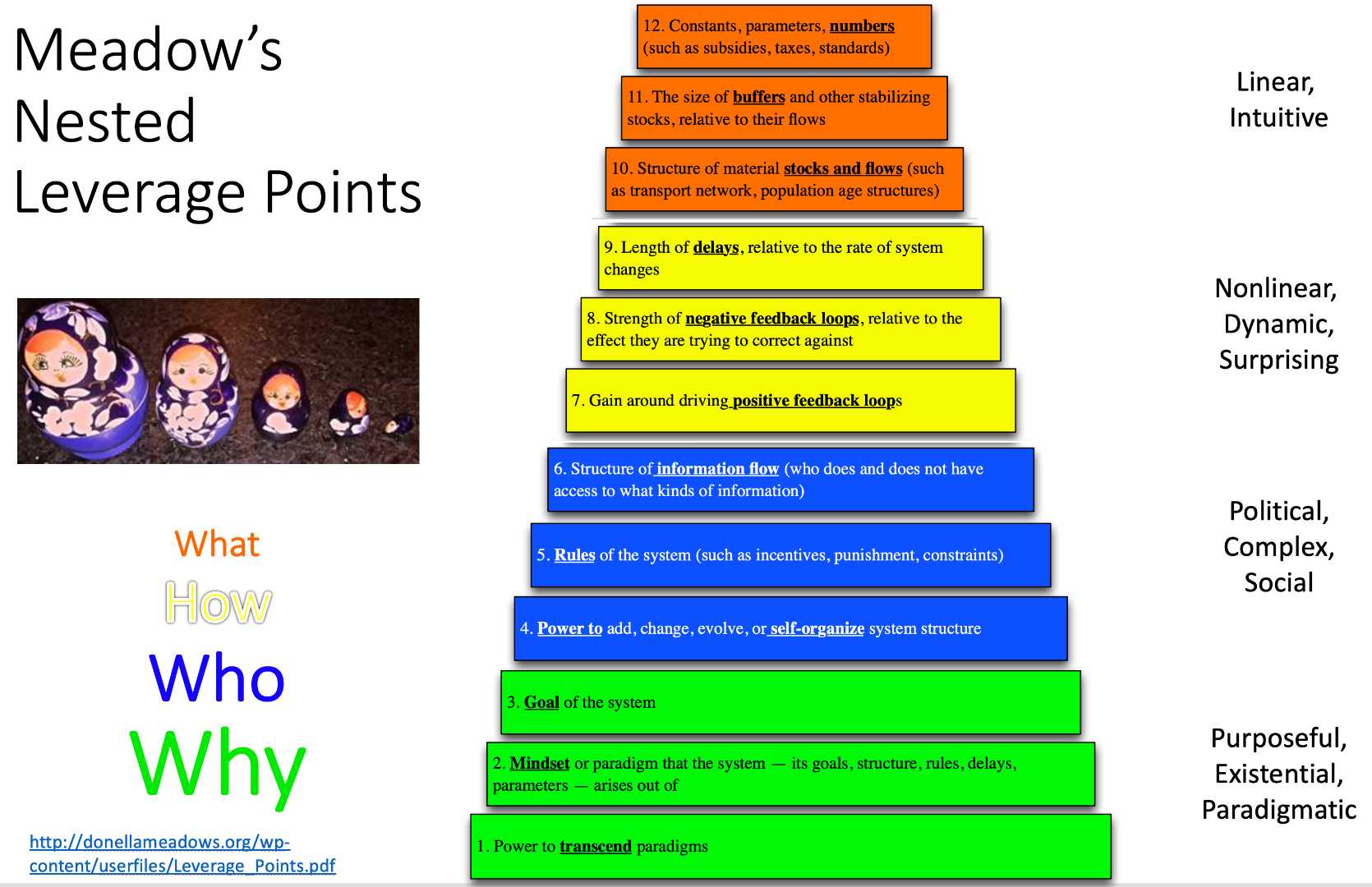**Simply put, this paper changed my life.**
PLACES TO INTERVENE IN A SYSTEM (in increasing order of effectiveness) by Donella H. Meadows
In this slide I have transformed Meadows' the leverage points into a framework of four questions for exploring complex socio-technical systems. It always works. Everyone can understand it--the four nested questions.

Pierson Elaboration/Interpretation of Donella Meadows Leverage Points paper.
SEE: Donella Meadows famous paper: Leverage Points: Places to Intervene in a Systems ![]() .
.
**System Discovery Process**
First--Shared Understanding Second--Discover Leverage Points Third--Model Your System Innovations Fourth--Do the Experiment
12- Constants, parameters, numbers (such as subsidies, taxes, standards). 11- The sizes of buffers and other stabilizing stocks, relative to their flows. 10- The structure of material stocks and flows (such as transport networks, population age structures). 9- The lengths of delays, relative to the rate of system change. 8- The strength of negative feedback loops, relative to the impacts they are trying to correct against. 7- The gain around driving positive feedback loops. 6- The structure of information flows (who does and does not have access to information). 5- The rules of the system (such as incentives, punishments, constraints). 4- The power to add, change, evolve, or self-organize system structure. (power to self-organize 3- The goals of the system. 2- The mindset or paradigm out of which the system — its goals, structure, rules, delays, parameters — arises. 1- The power to transcend paradigms.
.
Call if you think we can help. Marc Pierson (USA) 360 594-2316 Kerry Turner (UK) +44 7853 896127